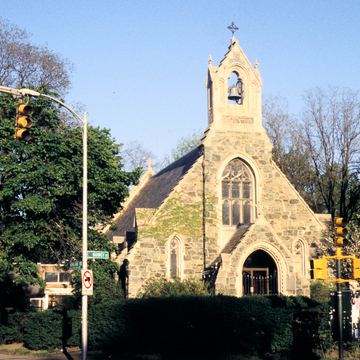You are here
Church of the New Jerusalem
H. Langford Warren, who then directed the architecture program at Harvard, designed the Sweden-borgian chapel, built to serve a theological school that once stood on the site of Harvard's Gund Hall (NY14). In his teaching, Warren promoted the study of Gothic architecture, and the chapel reflects his admiration for English country parish churches. The Gothic Revival elements of this stone chapel include a projecting entrance porch, bell cote tower, and wall buttresses; the Kirkland Street wing was added in 1966. True to Warren's Arts and Crafts interests, the chapel includes stone sculpture by Hugh Cairns, oak paneling and pews by Irving and Casson, tile by Henry Chapman Mercer, and stained glass by Donald MacDonald.
Writing Credits
If SAH Archipedia has been useful to you, please consider supporting it.
SAH Archipedia tells the story of the United States through its buildings, landscapes, and cities. This freely available resource empowers the public with authoritative knowledge that deepens their understanding and appreciation of the built environment. But the Society of Architectural Historians, which created SAH Archipedia with University of Virginia Press, needs your support to maintain the high-caliber research, writing, photography, cartography, editing, design, and programming that make SAH Archipedia a trusted online resource available to all who value the history of place, heritage tourism, and learning.















